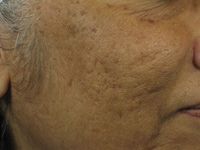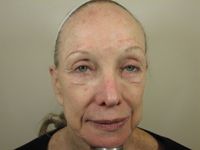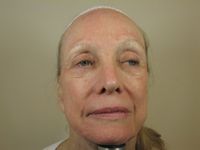- Case-Based Roundtable
- General Dermatology
- Eczema
- Chronic Hand Eczema
- Alopecia
- Aesthetics
- Vitiligo
- COVID-19
- Actinic Keratosis
- Precision Medicine and Biologics
- Rare Disease
- Wound Care
- Rosacea
- Psoriasis
- Psoriatic Arthritis
- Atopic Dermatitis
- Melasma
- NP and PA
- Skin Cancer
- Hidradenitis Suppurativa
- Drug Watch
- Pigmentary Disorders
- Acne
- Pediatric Dermatology
- Practice Management
- Prurigo Nodularis
- Buy-and-Bill
Article
Fractional resurfacing: Ablative, nonablative options abound
The advent of fractional resurfacing technologies has raised many controversial questions, an expert says. However, he says what's beyond dispute is that even the most effective resurfacing device works best in the context of combination treatments.

Key Points

Along with understanding which tool to use in specific situations, he says, dermatologists must appreciate that combining various modalities is the key to achieving global rejuvenation.
Although evidence shows some newer fractional resurfacing devices are, indeed, helpful for specific indications, "Fractional resurfacing can be even more effective as part of combination therapy.

Controversy

Answering such questions requires understanding the various categories of lasers, he says.
Dr. Narurkar says that although ablative lasers were considered radical when they first appeared, he no longer considers them the gold standard for skin resurfacing.

"Ablative resurfacing is really limited to skin types I through III," Dr. Narurkar says, "and even some type IIIs can experience significant hypopigmentation.
"Additionally, many patients, even with the right indication, are left with an unnatural alabaster sheen after treatment."
Even if one tweaks an ablative laser through techniques such as single-pass techniques or pseudo-fractional technology, such as ActiveFX (Lumenis), he says, "These lasers are still ablative."
Conversely, he says nonablative devices have proven to be best- suited for pigmented lesions and vessels ("photofacials").
Resurfacing with nonablative lasers and light sources has generally been disappointing, Dr. Narurkar says.
Nonablative fractional resurfacing, on the other hand, seeks to combine the effectiveness of an ablative procedure with the safety of a nonablative procedure. The first commercially available device of this type was the original Fraxel 1550 nm laser (Reliant Technologies), which has the longest clinical experience and has been the subject of 27 peer-reviewed articles.
True TNFR
To be a true nonablative fractional resurfacing (TNFR) laser, Dr. Narurkar says, a device must leave the stratum corneum intact without coagulating or vaporizing tissue.
It also must create true micro-thermal zones (MTZs) of controlled skin damage and provide true resurfacing, "which means extrusion can replace the damaged tissue, re-epithelialization occurs within 24 hours, and collagen denaturation extends down to about 1,100 microns."





